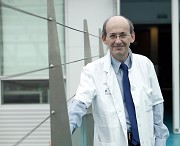
Abstract
Over the past years, there has been a major change in the hypothesis underlying the mechanism of action of transplanted cells in the dysfunctional myocardium. In brief, the consistent observation of a functional benefit at a time where the cells were no longer physically present in the transplanted tissue has led to shift from the initial concept of replacement therapy to paracrine signalling whereby the blend of biomolecules secreted by the cells harness endogenous repair pathways. Many of these molecules are clustered in extracellular vesicles (EV). These membrane-bound vesicles (which include exosomes, microparticles and apoptotic bodies) shuttle their cargo (made of proteins, lipid rafts, mRNA, miRNA, and other macromolecules) to target cells in a packaged form (which preserves it from degradation), which triggers intracellular signalling pathways and subsequent functional changes. The most compelling evidence for the role of EV or, more likely the EV-enriched secretome (which also includes proteins and other soluble molecules) is that it can recapitulate the benefits of the transplantation of its parental cells across a wide variety of preclinical models. Compared to cells, EV feature clinically appealing advantages, including a pharma-like manufacturing process more akin to that of a drug, the lack of immunogenicity, at least when the secreting cells are cardiovascular progenitor cells, and a functional stability under cryo-storage compatible with an off-the-shelf availability. However, several translational issues still need to be addressed including, the choice of the optimal parental cells (although there is increasing evidence that the best outcomes may be achieved by early-differentiated cells phenotypically close to the target tissue which rationalizes our use of pluripotent stem cell-derived cardiac-committed cells), the extent and method of purification of the conditioned medium, the thorough characterization of its composition, the development of straightforward in vitro potency tests required for quality controls and the optimization of direct intramyocardial delivery strategies to increase early retention and provide the released factors with enough exposure time to induce their biological effects. Alternatively, a great interest is also paid to an intravenous delivery of EV, with or without engineering for improving their cardiac targeting, as the noninvasive nature of this route allows for repeated administrations which seem critical for a sustained therapeutic benefit.


